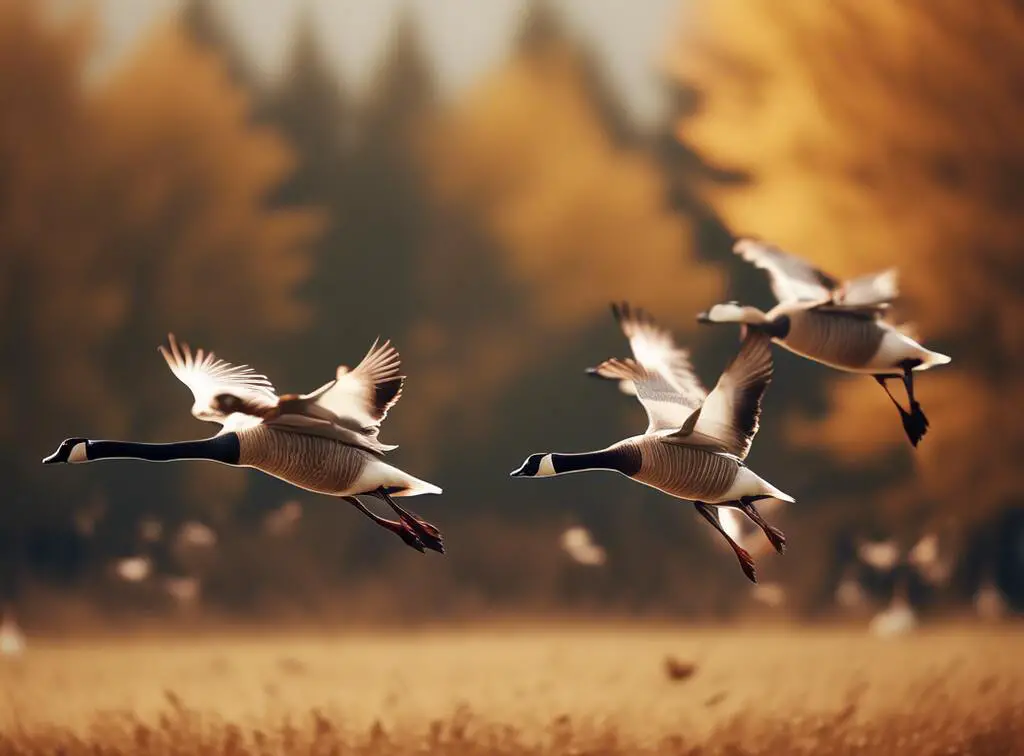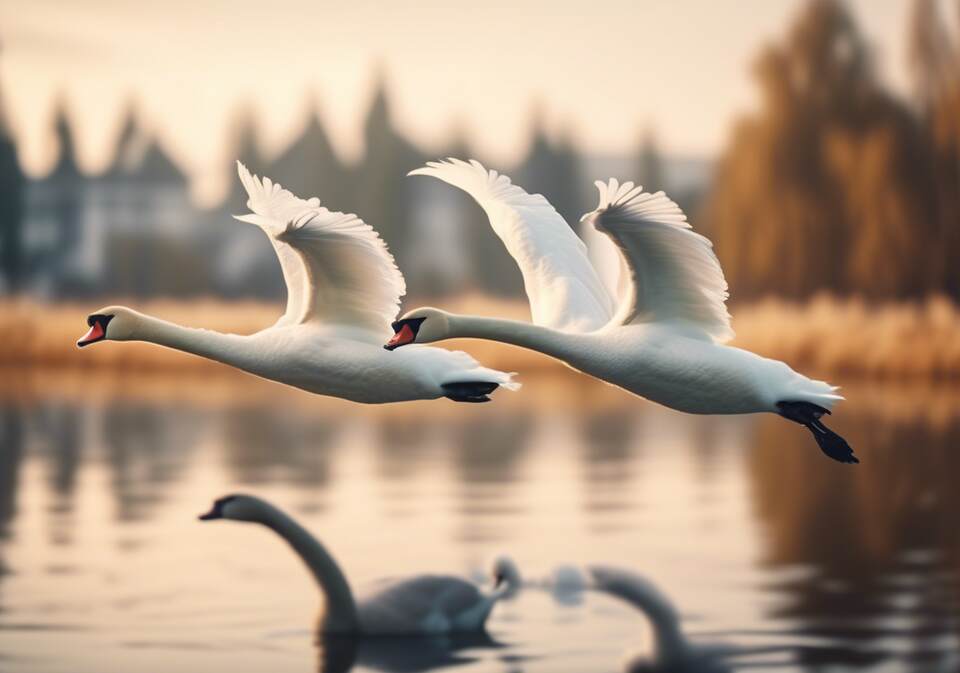Birds flying in a V-shaped pattern is a common sight in the sky, and many of us have marveled at the precision and coordination displayed by these feathered creatures. Have you ever wondered why birds fly in this distinctive formation? Let’s delve into the science behind this fascinating behavior.
Table of Contents
The Science of V-Shaped Flight Patterns in Birds
Aerodynamic Efficiency in V-Formation
One of the primary reasons birds fly in a V-shaped pattern is aerodynamic efficiency. When birds fly together in a V-formation, they create a drafting effect similar to that seen in cycling teams. The lead bird faces the brunt of the wind resistance, allowing the birds behind it to take advantage of reduced air pressure. This drafting effect enables the birds to conserve energy by reducing drag, making their long migratory journeys more sustainable.
Communication and Coordination
Flying in a V-formation also facilitates communication and coordination among the birds. The distinctive V-shape allows each bird to have a clear line of sight, both to the leader and to other members of the flock. This visibility enables them to stay in sync with each other, making split-second adjustments to maintain the formation. Through vocalizations and subtle movements, birds can signal changes in direction or speed to the rest of the flock, ensuring that they move as one cohesive unit.
Another advantage of the V-shaped flight pattern is that it maximizes the visual field of each bird. By positioning themselves diagonally behind one another, the birds have a wider field of view compared to flying solo. This enhanced visibility is crucial during long migrations when birds need to navigate varying landscapes and weather conditions. The V-formation allows them to spot food sources, avoid predators, and stay on course more effectively.
Leadership and Rotational Benefits
Within the V-formation, the lead bird plays a crucial role in guiding the flock. As the lead bird tires from facing the wind resistance, it drops back, and another bird takes its place. This rotational system allows all members of the flock to share the burden of leading, ensuring that no single bird becomes exhausted. By taking turns at the front, each bird contributes to the collective success of the group, demonstrating a cooperative and mutually supportive behavior.
Evolutionary Adaptations and Instinctual Behavior
The V-shaped flight pattern is not merely a random occurrence but is deeply ingrained in the evolutionary history of birds. Through years of natural selection, birds have developed instincts and behaviors that enhance their survival chances. Flying in a V-formation offers numerous advantages, including increased efficiency, better communication, and improved navigation skills. These benefits have been honed over generations, enabling birds to undertake long and arduous journeys with remarkable precision and effectiveness.
The V-shaped flight pattern observed in birds is a remarkable example of adaptation and cooperation in the animal kingdom. By understanding the science behind this behavior, we gain insight into the fascinating world of avian flight. The next time you see a flock of birds soaring overhead in perfect formation, take a moment to appreciate the innate intelligence and strategic prowess that enable them to navigate the skies with such grace and harmony.
Factors Influencing Birds to Fly in a V-Formation
Understanding the V-Formation Flight Pattern in Birds
The sight of a flock of birds flying in a distinctive V-formation is a marvel to behold. But have you ever wondered why birds choose to fly in this particular pattern? The V-formation is not just a random flight arrangement; it serves several important purposes for the birds.
Conservation of Energy
One of the primary reasons birds opt for the V-formation is to conserve energy. Flying can be physically demanding, especially during long migratory journeys. By flying in a V-formation, birds can take advantage of the upwash of air created by the bird in front of them. This upwash provides an uplift force, making it easier for the birds behind to maintain their position with less effort. As a result, the flock as a whole expends less energy compared to if each bird was flying solo.
Improved Aerodynamics
The V-formation also offers aerodynamic benefits to the birds. As each bird flies slightly above the bird in front of it, they reduce drag and increase lift. This configuration allows the flock to fly more efficiently at higher speeds and over longer distances. By working together in this synchronized manner, the birds can achieve better overall performance during their flights.
Communication and Coordination
Flying in a V-formation enables better communication and coordination among the members of the flock. The visual line of sight is clearer in this formation, making it easier for the birds to stay connected and react swiftly to changes in flight direction or speed. This improved communication helps the flock navigate obstacles, locate food sources, and avoid predators more effectively.
Social Cohesion
Apart from the practical advantages, the V-formation also plays a vital role in maintaining social bonds within a group of birds. Flying together in close proximity promotes social cohesion and reinforces the sense of community among the flock members. It allows them to share information, support each other, and strengthen their social ties, essential for their survival in the wild.
Leadership and Rotation
Within a V-formation, there is usually a lead bird at the front of the formation, setting the pace and direction for the rest of the flock. The lead position requires more effort and energy, so the lead bird will rotate with others in the flock to distribute the workload evenly. This rotation ensures that no single bird becomes overly fatigued and maintains the overall efficiency of the formation.
Adaptive Strategy
Birds are known for their remarkable adaptability, and the V-formation is a manifestation of their strategic thinking and cooperative behavior. By working together and leveraging the benefits of the V-formation, birds can overcome challenges, navigate long distances, and increase their chances of survival in the wild.
The V-formation flight pattern in birds is not just a visual spectacle but a sophisticated strategy honed through evolution to enhance their flight efficiency, conserve energy, improve communication, and strengthen social bonds. As we witness these awe-inspiring formations in the sky, it serves as a reminder of the remarkable capabilities and ingenuity of our feathered companions.
Conclusion
In understanding the science behind the formation of the V-shaped flight pattern in birds, it becomes apparent that their aerial displays are not just random occurrences but are deeply rooted in evolutionary advantages and physiological efficiencies. Through cohesive teamwork, birds maximize their energy savings, navigational skills, and communication abilities, all of which contribute to the success of their long-distance migrations. As they soar through the skies in their distinctive V-formation, birds exemplify the remarkable synergy between instinct, physics, and environmental adaptation.
On the other hand, various factors influence birds to choose the V-formation for their flights. From aerodynamic benefits to social cohesion, birds strategically organize themselves to minimize drag, conserve energy, and communicate effectively with their flock members. By leveraging these factors, birds enhance their flight efficiency, protect themselves from predators, and strengthen their social bonds. As they synchronize their movements in a harmonious V-pattern, birds epitomize the essence of unity, survival, and collective intelligence in the natural world.
Ultimately, the V-shaped flight pattern in birds represents a mesmerizing spectacle of nature’s ingenuity and biological marvel. Through their synchronized and strategic formations, birds transcend individual limitations to achieve collective goals of survival, navigation, and communication. Their flight patterns are not merely graceful movements in the sky but are profound manifestations of evolutionary strategies honed over millions of years.
Thus, the next time you witness a flock of birds gracefully gliding in a V-formation, remember the intricate science and complex interplay of factors that have shaped this breathtaking phenomenon in the avian world.



